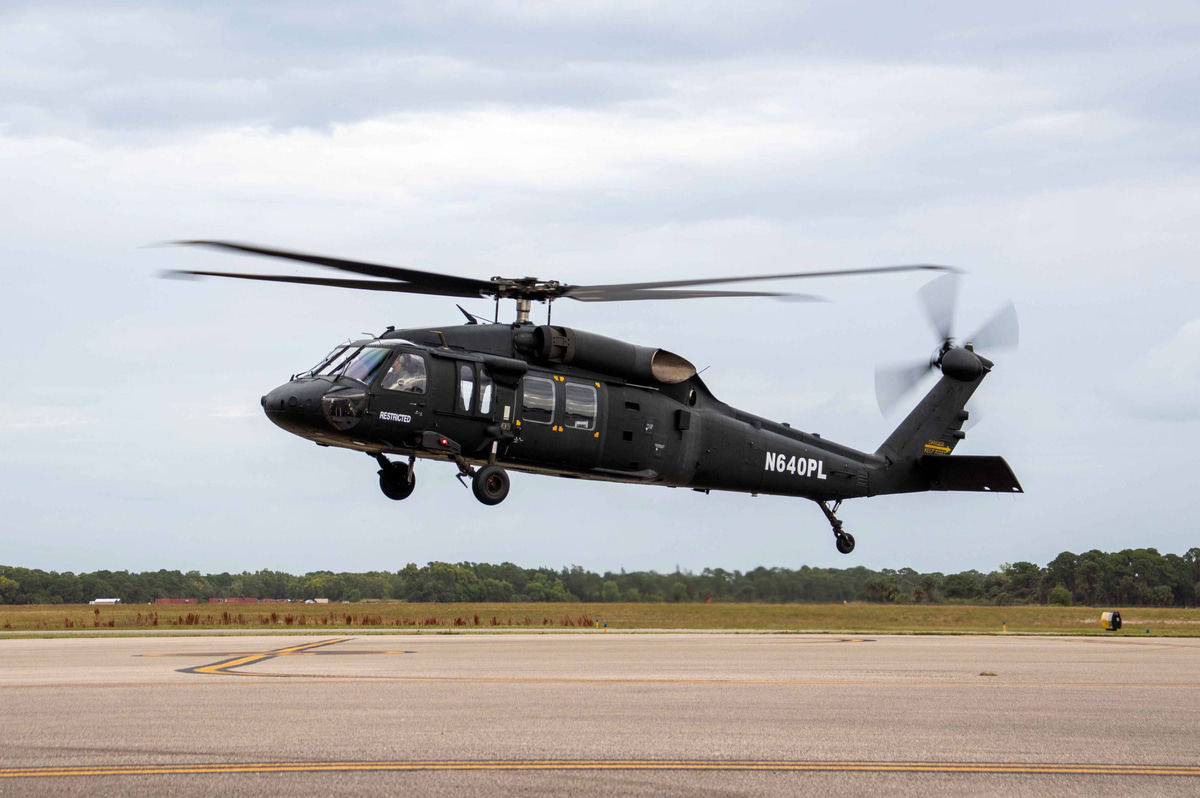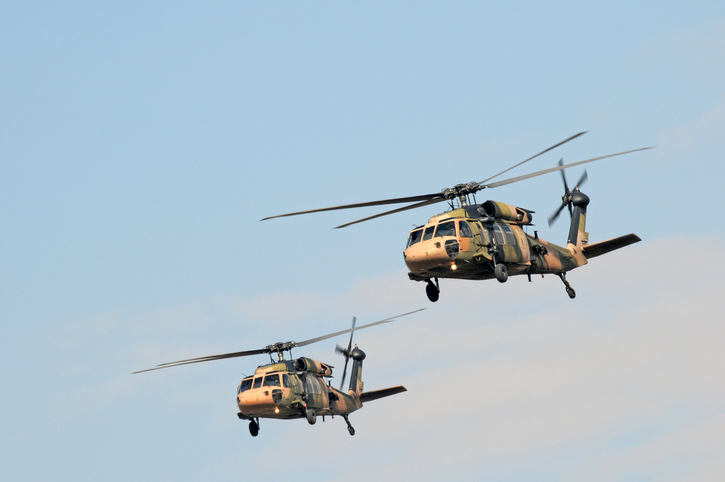The Sikorsky S 70 Helicopter: A Deep Dive into Its Style and Efficiency
The Sikorsky S 70 Helicopter: A Deep Dive into Its Style and Efficiency
Blog Article
High-Performance Multi-Role Rotorcraft Featuring Advanced Cockpit Technologies and Integrated Sensing Unit Solutions
The realm of rotorcraft technology has seen noteworthy advancements in recent times, particularly in the world of high-performance multi-role rotorcraft geared up with cutting-edge cabin modern technologies and seamlessly incorporated sensor systems. These innovations have not just enhanced the functional abilities of rotorcraft however have likewise dramatically influenced modern air travel procedures on different fronts. From enhanced objective adaptability to enhanced operational performance, the convergence of advanced cockpit innovations and integrated sensor systems has ushered in a new period of possibilities for rotorcraft applications. In the following conversation, we will certainly discover the evolution of rotorcraft innovation, delve into the realm of innovative cabin technologies, and analyze the ramifications of integrated sensor systems on the functional flexibility and efficiency of contemporary rotorcraft.
Evolution of Rotorcraft Technology
The development of rotorcraft innovation has actually been marked by significant developments in aerodynamics, products, and propulsion systems, forming the capacities and efficiency of modern rotorcraft. Furthermore, improvements in propulsion systems, including more powerful engines and innovative propulsion modern technologies, have actually made it possible for rotorcraft to achieve higher altitudes, faster rates, and greater payloads.
These improvements have not only changed the capabilities of rotorcraft yet have likewise increased their applications throughout numerous sectors, including army, industrial, and emergency solutions. The continual development of rotorcraft modern technology proceeds to drive development in the area, pushing the boundaries of what is possible and forming the future of vertical flight.
Advanced Cabin Innovations
Structure upon the fundamental advancements in aerodynamics, materials, and propulsion systems, the realm of rotorcraft modern technology currently moves emphasis towards pioneering Advanced Cockpit Innovations. The integration of cutting-edge technologies within the cockpit environment plays a crucial role in enhancing the operational capacities, safety and security, and effectiveness of modern-day rotorcraft. sikorsky s 70. Advanced Cabin Innovations encompass a large variety of functions developed to give pilots with enhanced situational recognition, streamlined information management, and intuitive control interfaces
Among the essential advancements in cabin design is the application of glass cabins, which change typical analog determines with high-resolution displays. These digital systems supply personalized formats, real-time information combination, and boosted readability, making it possible for pilots to gain access to essential info at a look. Progressed avionics systems, such as fly-by-wire controls and increased reality displays, are changing exactly how pilots communicate with the airplane, enabling for specific control and enhanced decision-making abilities.


Integrating sophisticated cockpit technologies not just enhances pilot efficiency yet additionally adds to general goal performance and safety and security in intricate operational settings. By leveraging modern innovations within the cockpit, rotorcraft makers are establishing new standards for operational excellence and goal success.
Integrated Sensing Unit Equipments
With the evolution of rotorcraft modern technology, the integration of advanced Integrated Sensing unit Systems has actually ended up being paramount in enhancing functional performance and security. These Integrated Sensing unit Equipments incorporate a broad range of technologies that provide vital data for different features such as navigating, surveillance, targeting, and environmental monitoring. By seamlessly site incorporating sensors like radars, cameras, lidar, and infrared systems into rotorcraft, operators can gain from enhanced situational understanding, improved objective capacities, and minimized pilot workload.
One secret advantage of Integrated Sensor Solutions is their capability to gather real-time data and give actionable insights to pilots and objective drivers. Progressed radar systems can find and track targets over long distances, allowing for very early risk detection and reliable reaction planning. Furthermore, incorporating infrared and electro-optical video cameras makes it possible for rotorcraft to carry out reconnaissance and monitoring goals with accuracy and precision.
Basically, the integration of innovative sensor modern technologies into rotorcraft not just boosts operational efficiency however additionally adds considerably to general objective success and staff security. As rotorcraft proceed to evolve, the role of Integrated Sensor Equipment will definitely stay at the leading edge of technology in the aerospace sector.
Functional Adaptability and Effectiveness
Enhancing functional flexibility and effectiveness in rotorcraft is an all-natural progression from the integration of advanced Integrated Sensor Solutions. By leveraging the insights and information supplied by these sophisticated sensing unit systems, rotorcraft can maximize their performance across various objectives and environments.
Functional versatility incorporates the ability of rotorcraft to adjust to different duties and circumstances efficiently. With sophisticated cockpit technologies and incorporated sensor systems, rotorcraft can effortlessly shift between jobs such as search and rescue, clinical evacuation, monitoring, and a lot more. This adaptability improves the rotorcraft's capacity to additional resources fulfill diverse functional needs without needing substantial reconfiguration.
Performance in rotorcraft procedures is important for making the most of goal efficiency and source usage. Integrated sensing unit systems play a critical role in improving operational performance by giving real-time data on climate condition, surface mapping, target monitoring, and much more. This information allows pilots to make informed decisions promptly, enhance flight courses, save fuel, and boost total objective efficiency.
Impact on Modern Aeronautics Workflow

Additionally, the combination of advanced sensing units promotes improved mission planning and implementation, making it possible for rotorcraft to do a vast array of tasks with enhanced precision. From search and rescue procedures to airborne firefighting and legislation enforcement objectives, the capabilities of modern rotorcraft outfitted with sophisticated cabin modern technologies and incorporated sensing unit systems are unrivaled.
In addition, the impact of these advancements expands beyond functional efficiency to cost-effectiveness and sustainability. By maximizing flight routes, gas consumption, and maintenance schedules, high-performance rotorcraft equipped with innovative cockpit innovations and sensing units add to lowering operational prices and environmental impact, making them indispensable properties in modern-day air travel procedures.
Verdict
Finally, the high-performance multi-role rotorcraft with innovative cabin modern technologies and incorporated sensing unit systems stands for a substantial evolution in aviation innovation. These technologies enhance functional versatility and efficiency, eventually impacting contemporary air travel procedures in a positive method. The assimilation of these innovative innovations permits for enhanced abilities and efficiency in numerous goal scenarios, showcasing the continued innovation of rotorcraft modern technology in the aeronautics industry.
The world of rotorcraft innovation has actually seen notable improvements in recent times, particularly in the realm click this of high-performance multi-role rotorcraft furnished with advanced cabin modern technologies and seamlessly incorporated sensing unit systems. From improved mission flexibility to improved functional performance, the merging of innovative cabin technologies and incorporated sensing unit systems has ushered in a new era of possibilities for rotorcraft applications. In the complying with discussion, we will certainly check out the development of rotorcraft innovation, delve right into the world of sophisticated cabin advancements, and check out the implications of incorporated sensing unit systems on the functional versatility and efficiency of modern-day rotorcraft.

Report this page